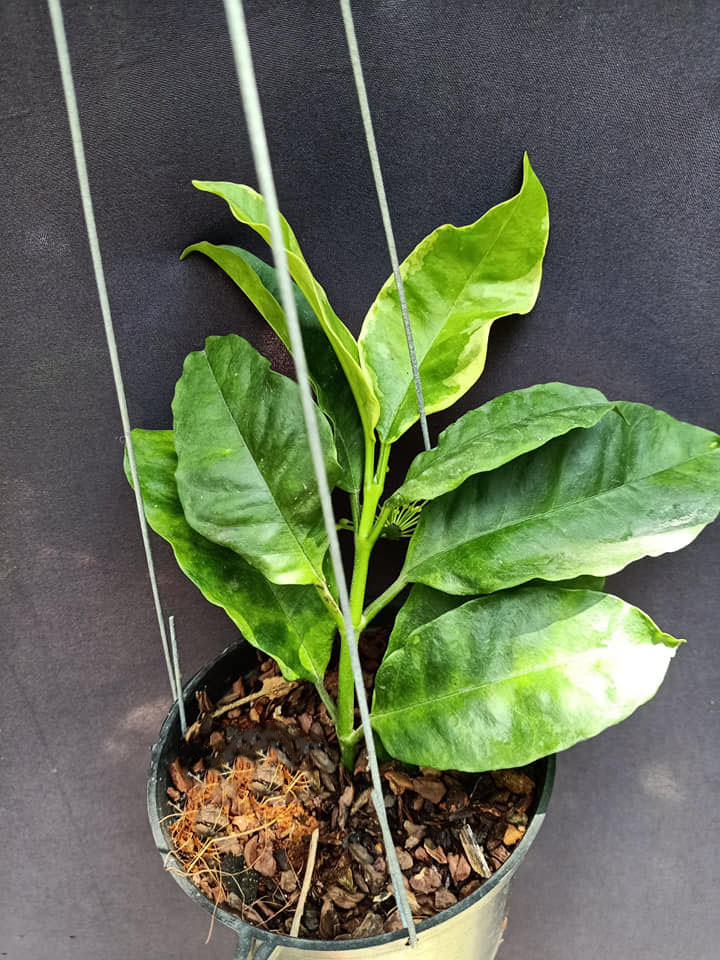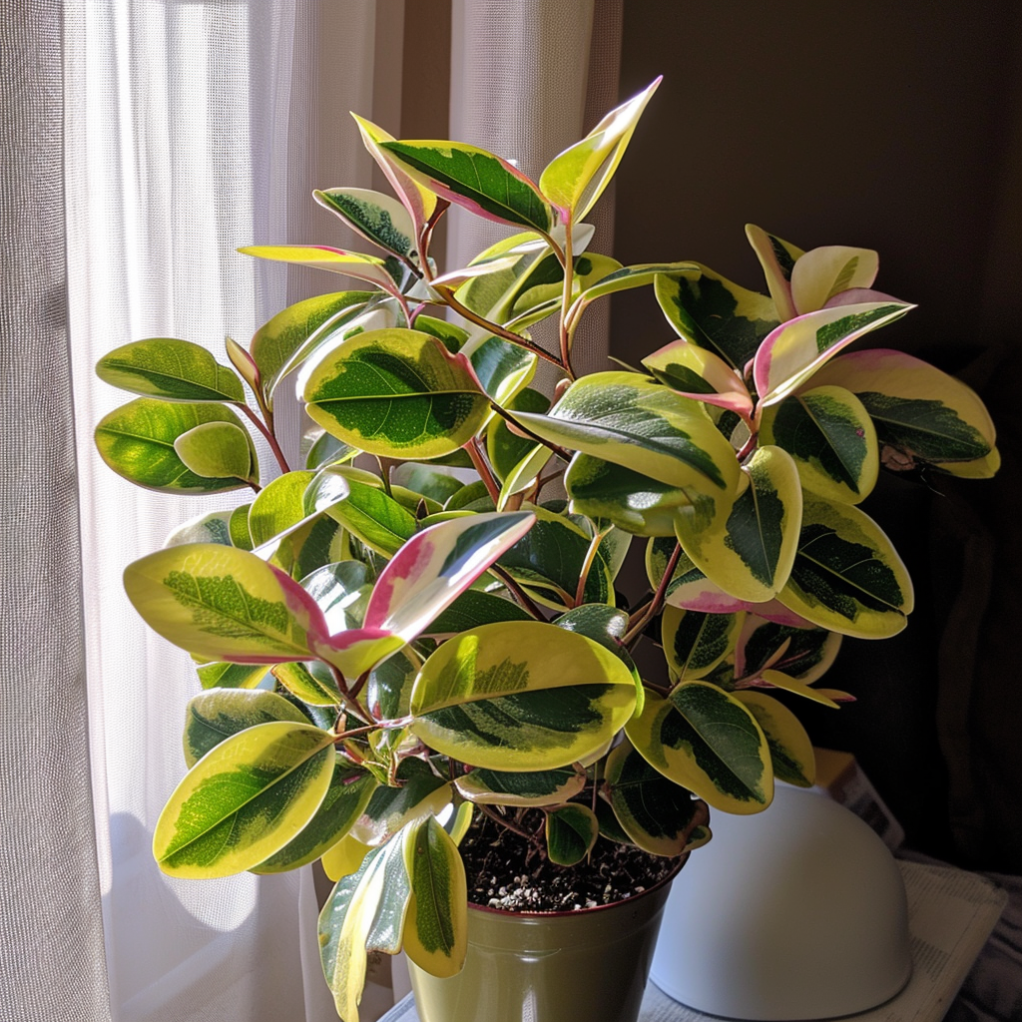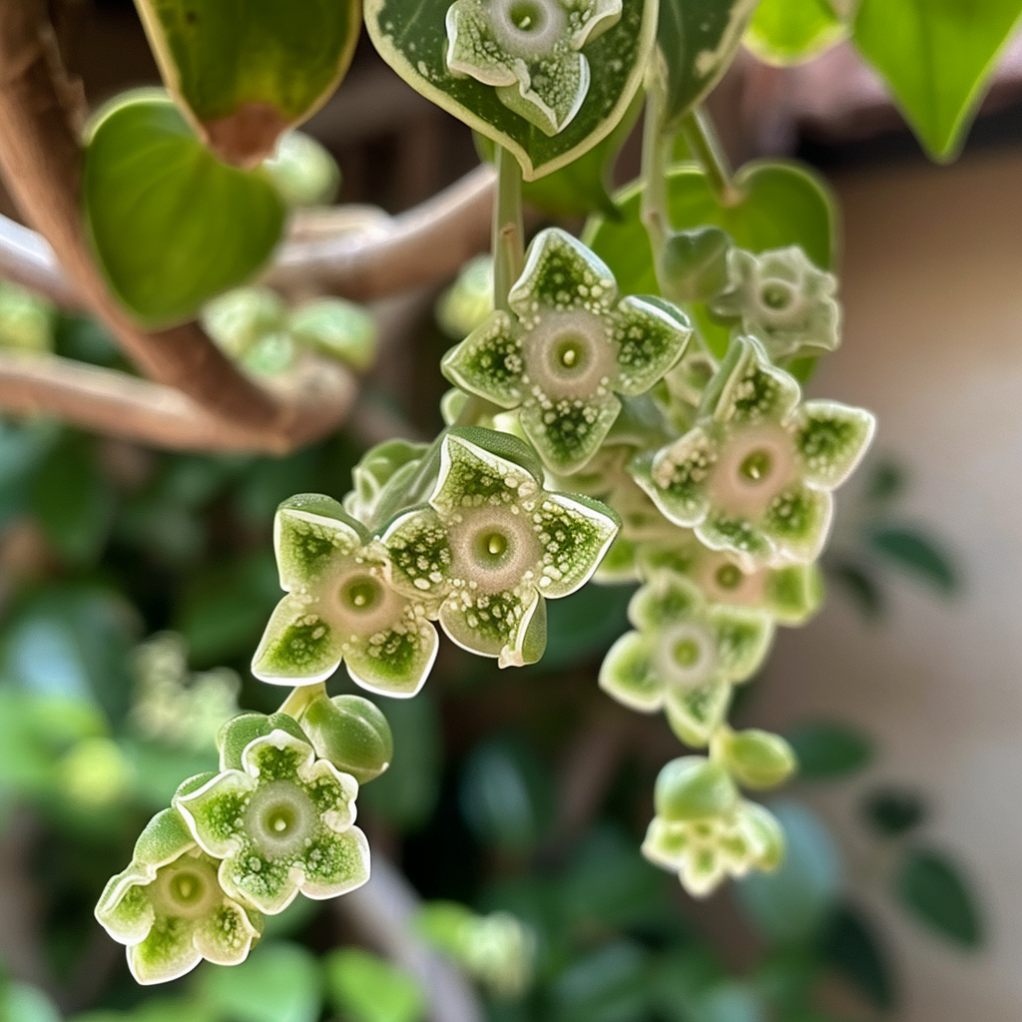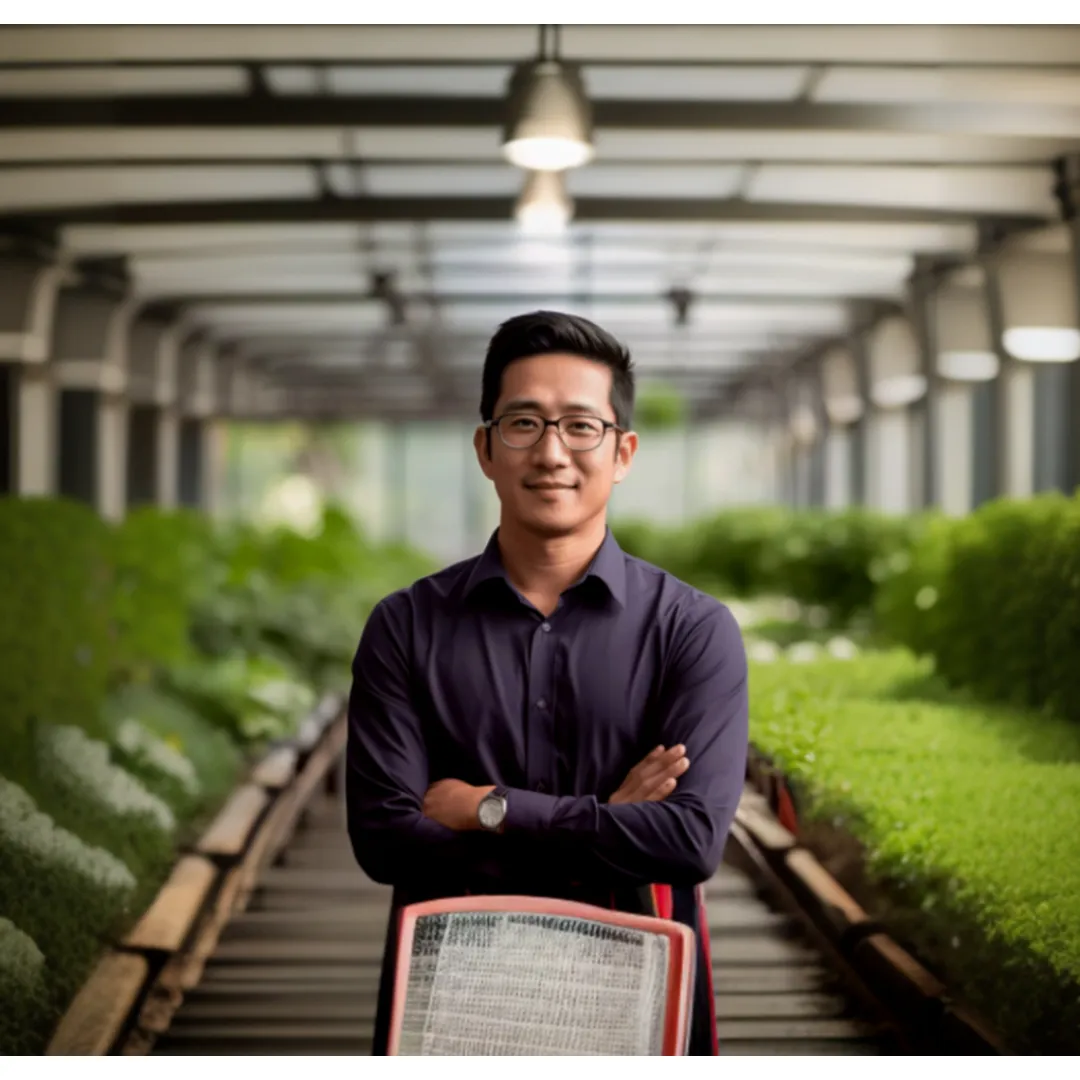When it comes to caring for hoya plants, one of the most common questions is whether these vines prefer sun or shade. As a tropical plant that often grows as an epiphyte in its native Asian jungle habitats, the hoya does best with bright, indirect light. However, there is no one-size-fits-all answer, as different hoya species and cultivars have slightly different light needs. Read on as we share 7 must-know tips to help ensure your hoya thrives in the right amount of sun or shade.
1. Most Hoyas Do Best in Bright, Indirect Light
Finding the Hoya’s Sweet Spot
While most hoyas don’t want intense midday sun, they do appreciate plenty of ambient brightness. Aim to provide your hoya with 4-6 hours of gentle sunlight filtered through sheer curtains or bright shade under a patio or tree. This balances their need for sufficient light to fuel growth and flowering while preventing leaf scorch.
Southern or west-facing windows work well indoors. Outdoors, an east-facing covered porch is an ideal spot. If you don’t have these exposures, supplement with a grow light. Rotate your plant periodically so all sides receive even lighting.

Signs Your Hoya Needs More or Less Light
With experience, you’ll learn to read your hoya’s signals. Stretched out, weak stems and sparse leaf growth means insufficient light. Move it closer to a window or under a grow light. On the flip side, if leaves turn yellow or brown at the edges or feel hot to the touch, it’s getting too much direct sun. Filter the light or move it back from the window.
2. Certain Hoya Species and Cultivars Prefer More Sun
Sun-Loving Species and Cultivars
While most hoyas grow best in bright, indirect light, there are a few that appreciate several hours of direct morning or late afternoon sunlight. These generally have thicker leaves and stems equipped to handle more light. Examples include:
- Hoya kerrii
- Hoya carnosa ‘Krimson Princess’
- Hoya carnosa ‘Rubra’
- Hoya lacunosa

If possible, slowly acclimate these to increasing sun exposure over a period of 2-3 weeks to avoid leaf burn. Provide ample water and humidity as added sun protection.
Testing a Hoya’s Sun Tolerance
Not sure how much sun a particular hoya can handle? Try setting it in a bright, shaded spot and give it a few hours of early morning or late afternoon sun, gradually increasing over 2-3 weeks. Monitor for signs of stress like yellowing or scorched leaves. This helps you learn that plant’s unique preferences.
3. Some Hoyas Grow Better in Bright, Indirect Light or Partial Shade
Low-Light Loving Hoyas
While most hoyas need ample ambient brightness, there are certain species and cultivars that actually prefer lower light conditions. These include:
- Hoya multiflora
- Hoya pubicalyx
- Hoya obovata
- Many variegated cultivars

For these lower-light hoyas, set them near a north-facing window where they’ll receive gentle ambient daylight but no direct sun. Outdoor partial shade under taller plants also works well. Avoid intense southern sun exposure.
Ensuring Sufficient Light for Blooms
Even shade-preferring hoyas need a base level of brightness to bloom properly. If your hoya’s foliage looks healthy but it’s not flowering, try a sunnier east or west window to see if more light helps coax out the buds. Remember to acclimate it slowly to prevent leaf scorch.
4. Some Direct Sun Can Be Beneficial Outdoors
Morning Sun for Outdoor Hoyas
While we don’t recommend situating most container hoyas in full midday sun, many tolerate a few hours of early morning sunshine quite well. The slanted angle of rising sun casts a gentle light that tends not to burn delicate foliage.
If possible, provide outdoor hoyas with eastern sun exposure shaded after about 11 am. The warmth fuels growth and blooming while avoiding intense afternoon rays.
Sun Protection Tips
When situating hoyas in direct outdoor sun, even just morning sun, be sure to:
- Acclimate the plant slowly over 2-3 weeks
- Water thoroughly before and after sun exposure
- Mist leaves frequently to boost humidity
- Watch closely for signs of stress like yellowing or browning leaves

This helps prevent light-related damage.
5. Special Considerations for Variegated Hoyas
Managing Light for Variegated Varieties
Hoyas with variegated leaves decorated in creamy white, yellow, or pink need special care when it comes to sun exposure. Too much light can burn and bleach delicate foliage. For most variegated hoyas like ‘Krimson Queen’, aim for a maximum of 2 hours of early morning sun filtered by a sheer curtain.
Bright, indirect indoor light is safest for maintaining gorgeous variegation. Supplement with grow lights if needed. Rotate the pot every few days to ensure even exposure on all sides for symmetrical growth.

Embrace the Hoya Lifestyle – Select Your Plant Today!
Troubleshooting Loss of Variegation
If you notice your variegated hoya’s leaves reverting to solid green, it likely means insufficient light for that variety. Slowly move it closer to an east or west window, watching closely for signs of leaf burn. Use sheer curtains to filter intense sunlight. Hoya carnosa varieties are generally the most sun-tolerant variegated types.
6. Seasonal Light Adjustments Maximise Hoya Health
More Light in Spring and Summer
As the days lengthen in spring and the sun strengthens towards summer, hoyas awake from winter dormancy ready to put on a growth spurt. This is when they need maximum light intensity to stay compact and really thrive.
Place spring and summer growing hoyas in the sunniest suitable window or outdoor location you have. Let them soak up the increased ambient brightness and warmth summer provides in many regions.

Reduced Light in Fall and Winter
Watch for signs your hoya needs adjusted light levels come fall when the angle of sunlight changes along with day length. Leaves may scorch if a plant accustomed to bright summer light remains in the same intense window.
As the winter solstice approaches, the lower angle of sunlight combined with shorter days means most homes and outdoor areas have significantly less ambient brightness. To prevent stretched, weak growth, supplementary lighting or plant rotations help offset reduced winter light levels.
7. Use Sheer Curtains or Shade Cloth to Filter Intense Light
Sheer Curtains as Sun Filters
One easy way to allow hoyas to receive gentle filtered sunlight is hanging lightweight, sheer curtains in sunny windows. These delicate fabrics diffused harsh rays nicely, preventing leaf burn while still letting plenty of ambient brightness filter through.
White or light colored sheer panels work best as sunlight filters. Avoid heavier, darker drapes that can block too much needed light.

Outdoor Shade Cloth Sun Barriers
In exposed outdoor areas with intense midday sun, utilize shade cloth over hoya containers and mounts. These permeable screens made from UV-resistant synthetic fiber filter bright sunshine effectively while still allowing air circulation. Shade percentages from 30% to 70% are ideal for most hoyas.
Attach shade cloth to supports above and around containers. This shelters vulnerable foliage while permitting sufficient surrounding brightness to reach plants from all angles for balanced growth.
FAQ
- Is the Hoya plant suitable for direct sunlight?
- Answer: Hoyas generally prefer bright, indirect sunlight. Direct sunlight can scorch their leaves, so it’s best to provide filtered or dappled sunlight.
- How much light does a Hoya plant need?
- Answer: Hoyas thrive in bright, indirect light. They can tolerate some morning or evening sun, but avoid exposing them to harsh midday sunlight.
- Can I keep my Hoya plant in a completely shaded area?
- Answer: Hoyas can survive in low-light conditions, but they won’t thrive. It’s recommended to provide some level of indirect light for healthy growth.
- What if my Hoya plant isn’t flowering in the current light conditions?
- Answer: Insufficient light is a common reason for Hoyas not flowering. Try moving your plant to a brighter location, but avoid direct sunlight, as it can harm the plant.
- How do I know if my Hoya plant is getting the right amount of light?
- Answer: Observe your Hoya’s leaves. If they start to look pale or develop yellow spots, it may be getting too much light. If the leaves appear stretched or leggy, it may need more light. Adjust the placement accordingly to maintain optimal lighting conditions.

